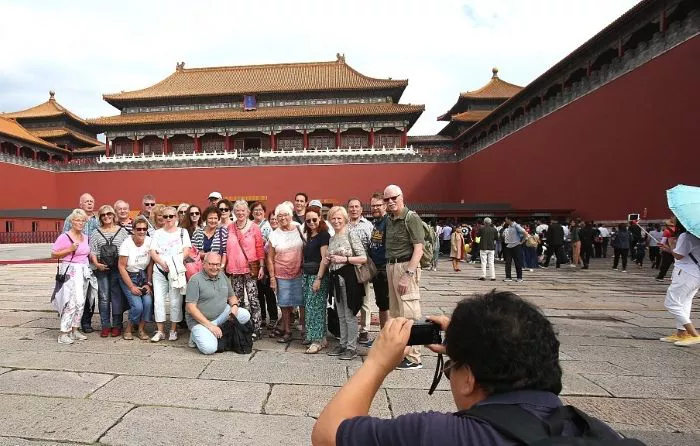China’s tourism sector is witnessing a remarkable surge in inbound spending, fueled by innovative policies including instant tax refunds and extended visa-free transit periods. The 2025 Government Work Report explicitly prioritized boosting inbound consumption, with concrete measures now demonstrating significant results. National tax authority data reveals foreign visitor spending reached $94.2 billion in 2024, marking a 77.8% year-on-year increase, while Q1 2025 figures show triple-digit growth in key shopping districts.
Instant Tax Refunds Transform Shopping Experience
Malaysian tourist Ms. Chew’s experience at Chengdu IFS mall exemplifies the game-changing “shop-tax-refund-immediately” policy. After purchasing luxury goods, she received her 7,560 yuan tax refund onsite rather than waiting for airport processing. “The convenience makes me buy more authentic Chinese products,” she remarked. This policy, now expanded nationwide after successful pilots in Sichuan, Beijing, Shanghai and Guangdong, has produced staggering results – Chengdu’s Parkson Shopping Center reported 435% sales growth and 670% increase in refund transactions year-on-year.
Policy Synergy Creates Perfect Storm for Growth
The convergence of multiple pro-tourism policies is creating unprecedented momentum. Australia’s Ms. Levitt combined 240-hour visa-free transit with instant tax refunds to purchase premium camera equipment in Shenzhen. Immigration Administration data shows 71.3% of 921.5 million foreign entries utilized visa-free policies, with major shopping hubs like Shenzhen’s MixC mall now hosting 63 tax-refund stores (47 offering instant processing). “Foreign shoppers save 9% immediately on luxury purchases – this changes spending psychology,” noted a high-end retailer.
Regional Innovations Enhance Global Appeal
Cities are competing to optimize the foreign visitor experience through creative solutions. Beijing has launched multilingual tax refund guides and digital store maps, while Changsha’s IFS mall processes refunds for 31 categories from fashion to cultural creations. Shandong province allocated 20 million yuan to develop 30 specialized tourist routes with multilingual support. “The policy mix sends clear signals about China’s commitment to openness,” observed Central University of Finance professor Liu Huan.
Unlocking Next-Generation Growth Opportunities
Industry experts identify three strategic frontiers for sustained expansion. Researcher Yin Xiang from Sichuan University highlights demand for “circle-based, diversified experiences,” while tax-free industry veterans advocate expanding domestic product offerings beyond traditional imported goods. Southwest University of Finance’s Tang Jiqiang emphasizes enhancing digital convenience through solutions like doorstep delivery of tax-free purchases and streamlined verification.
The Social Media Multiplier Effect
With international tourists increasingly relying on digital platforms for travel decisions, HuaLue Institute senior researcher Wang Xu notes: “Travel vlogs and influencer content now drive both destination choices and spending patterns.” This presents both challenge and opportunity – destinations like Chengdu are successfully integrating cultural IP (panda motifs, Three Kingdoms history) with digital marketing to create viral consumption scenarios, from hotpot feasts to Jinjiang River night cruises. As policy tailwinds meet digital transformation, China’s inbound tourism economy appears poised for its next growth chapter.
Related Topic:
- Morocco: A Tapestry of North African Wonders
- Australian Tourism Industry Rides China’s Visa-Free Wave
- 2025 Chinese Opera Festival Debuts in Vienna with Stunning Wu Opera Performance

